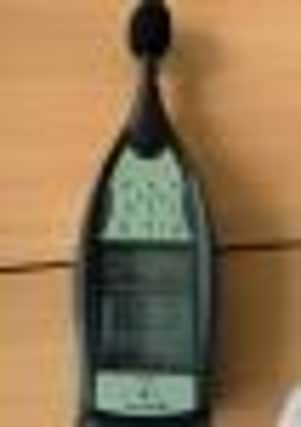Data gathering process


Niall said: “When the equipment is installed all the complainant has to do is press a button when he considers a noise is causing an annoyance. It will record for 15 minutes at a time unless he stops it.
“We don’t have to listen to every minute that has been recorded, just the bits when the button has been pressed to indicate a potential nuisance.”
Advertisement
Hide AdAdvertisement
Hide AdOnly when the button is pressed on the recording system do the Environmental Protection team hear the actual sounds that the people in the house are hearing. All other noise is recorded as sine waves - so the surveillance team won’t be listening in on people’s conversations.
The recording equipment is padlocked in a box so it can’t be interfered with.
Niall commented: “We explain to complainants that due to the complexity of noise complaint investigations the process can involve lengthy periods of time before it can be concluded.”
Niall explained how the results of the surveillance are used.
Advertisement
Hide AdAdvertisement
Hide Ad“Whether or not it constitutes a nuisance comes down to a number of factors,” he said.
“How long the noise goes on for, how often, what’s the noise level, how does it affect the people in the house, ie sleeping, watching TV, sitting outside in the garden. It’s all relative to background noise.”
At Council HQ Niall showed Graeme how the data that’s gathered from the recording equipment is put to use.
He said: “The recording equipment is plugged into the computer and downloaded into the B&K Evaluater and Explorer software. From there I’m able to see the times when the complainant has pressed the button as it’s highlighted in purple blocks. It’s only those blocks we listen to, but we can see the entire seven day’s worth of noise by scrolling along the timeline.”
Advertisement
Hide AdAdvertisement
Hide AdNiall is one of two designated officers in the Environmental Protection team alongside Sarah McMenamin. They are part of the Environmental Health Department which also covers Public Health and Housing, Health and Safety, Food Control, Licensing and Consumer Protection.
“It takes a while to listen to the whole lot because we’ve other things to do in the department as well. Noise Abatement is just one facet of the job, we also do local authority pollution prevention control, planning consultations, air quality assessments, and dust, smoke and smell complaints.”
Niall, who has a degree in Environmental Health, added: “You have to be focused when dealing with a noise complaint as there is a lot of fine detail.
“Each noise complaint could have a large amount of data. It’s assessed as to whether the noise constitutes an nuisance. It’s not just about how loud the noise is, important issues such as background noise,WHO community noise guidelines, frequency and duration are also taken into account.
Advertisement
Hide AdAdvertisement
Hide Ad“If it’s deemed it does constitute a nuisance a noise abatement notice is served on the person responsible telling them to take the steps identified in the notice.
“They’re given a time period to remedy the situation and it will be reassessed as to whether they’ve complied with the notice or not.
“If not it could end up in court.”